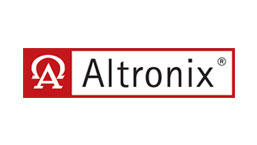By Ron Walters
This post is a guest editorial that appeared in the March 2015 issue of Northeast/Midwest Sentinel. (View the article online.) Posted with permission of the publisher and author.
It wasn’t a headline or feature story butt it caught my eye. In spite of the perception that the alarm industry is the biggest issue for law enforcement, perhaps we aren’t. After all, the alarm industry’s relationship with Public Safety Answering Points (PSAPS) in our joint attempt to reduce dispatches is well documented.
As reported by Businessweek, FCC Commissioner Michael O’Reilly just announced that our nation’s PSAPS are experiencing 84 million false 9-1-1 calls annually, with 70% coming from cellular phones. To make matters worse, half of these were inadvertent “butt calls”. These calls have become so prevalent because our elected representatives decided that whether a phone was locked or not, it should be 9-1-1 capable. On the surface an honorable mission, but as Sir Isaac Newton said so many years ago, “For every action there is an equal and opposite reaction”.
For the last two years our industry has supported the Association of Police Communication Officers (APCO) in fighting the FCC and this same FCC Commissioner from requiring every device that connects to the Internet to be 9-1-1 capable. Really? Can you imagine the impact of every game console being connected to 9-1-1? Heck, you can’t even call a game console back.
If we truly have a common mission with law enforcement then we need to actively support them. That’s what this article is really about.
 The largest joint project in the history of our relationship is without question the up and coming ASAP to PSAP project. The Automated Secure Alarm Protocol to the Public Sector Answering Point(s) is a direct link between the PSAP and our central stations. Over the last 25 years there have been several attempts to launch similar programs; however, the biggest hurdle was always having direct communications with law enforcements Computer Aided Dispatch (CAD) software. For security, no outside source was allowed to directly interface with these CAD programs. Also, if there was ever going to be any such connection it would require that all CAD vendors and all monitoring automation vendors come together to develop compatible software.
The largest joint project in the history of our relationship is without question the up and coming ASAP to PSAP project. The Automated Secure Alarm Protocol to the Public Sector Answering Point(s) is a direct link between the PSAP and our central stations. Over the last 25 years there have been several attempts to launch similar programs; however, the biggest hurdle was always having direct communications with law enforcements Computer Aided Dispatch (CAD) software. For security, no outside source was allowed to directly interface with these CAD programs. Also, if there was ever going to be any such connection it would require that all CAD vendors and all monitoring automation vendors come together to develop compatible software.
So what exactly is the point of ASAP to PSAP?
First and foremost is the “hands off” functionality. This means we can dispatch to the PSAP, and they can receive it, without any human interaction. Also, the dispatch can be canceled in the same fashion. In fact in some communities the alarm dispatch could potentially end up on a computer screen in a patrol car without ever having been read at the PSAP.
On the industry side the Central Station Alarm Association (CSAA) has not only spearheaded this effort, their members have helped finance it. Influential industry leaders such as Pam Petrow of Vector Security, Ed Bonifas of EDS and Bill Hobgood from the City of Richmond, Virginia have taken the leadership position in ASAP to PSAP and their efforts should be applauded.
ASAP to PSAP is the perfect example of how we work with law enforcement. It is truly a joint effort and promises to have a huge impact on reducing false dispatches. If you are on the monitoring side of our industry you need to contact the Central Station Alarm Association (CSAA) at www.csaaintl.org.
ASAP to PSAP is a monumental step in our relationship with law enforcement. No If’s, And’s or Butt’s about it, whether you are on the installation or monitoring side of the industry, you should follow the link to learn more about this vital program that promises to alter the landscape of police dispatches to alarms.
Ron Walters is a Director of SIAC and is a 35 year veteran of the alarm industry. He can be reached at ronw@siacinc.org.
 Criticom Monitoring Services (CMS), one of the largest wholesale alarm monitoring companies in the United States, went live with ASAP® in the city of Richmond, VA on October 21. “Awareness of ASAP’s very real benefits to PSAPs is spreading,” said Jay Hauhn, executive director of CSAA. “The program gathers momentum with each prestigious national monitoring company that comes on board. Having CMS go live is a big step in the process of implementing this service around the nation.”
Criticom Monitoring Services (CMS), one of the largest wholesale alarm monitoring companies in the United States, went live with ASAP® in the city of Richmond, VA on October 21. “Awareness of ASAP’s very real benefits to PSAPs is spreading,” said Jay Hauhn, executive director of CSAA. “The program gathers momentum with each prestigious national monitoring company that comes on board. Having CMS go live is a big step in the process of implementing this service around the nation.”










